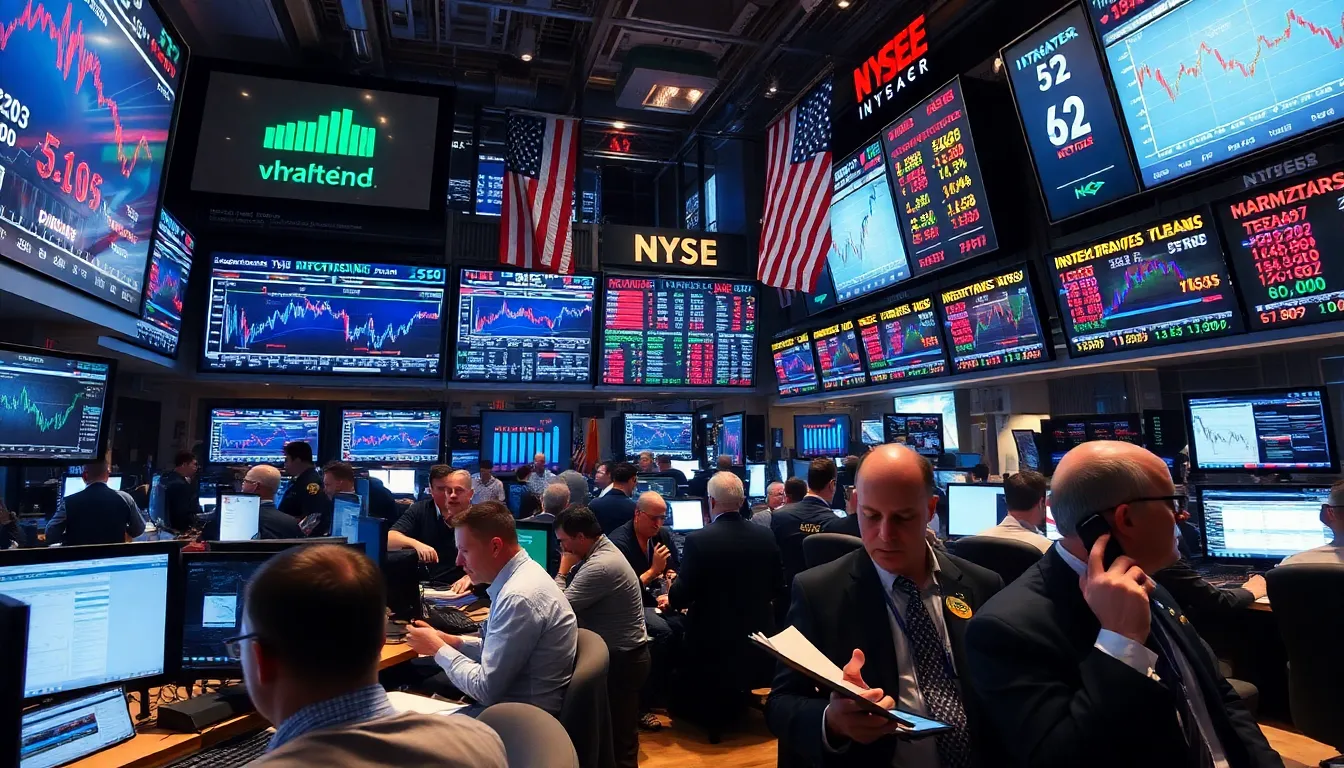Investing can feel like a high-stakes game of poker, where every decision could lead to a jackpot or a bust. But before diving into the investment pool, it’s crucial to know which two factors can turn your fortune from rags to riches or vice versa. Understanding these influences can be the difference between sipping cocktails on a beach or counting pennies in your living room.
Table of Contents
ToggleUnderstanding Investment Risk
Investment risk encompasses the potential for financial loss in an investment portfolio. Factors influencing this risk include market volatility and the overall economic environment.
Market volatility refers to the frequency and magnitude of price fluctuations in securities. High volatility can lead to significant gains or losses within short periods. Investors should assess their risk tolerance against the unpredictability of equities, commodities, and other asset classes.
Economic conditions also play a crucial role in determining investment risk. Changes in macroeconomic indicators such as inflation, interest rates, and unemployment can affect investor sentiment and market stability. For example, rising interest rates may reduce consumer spending, negatively impacting corporate earnings and stock prices.
Understanding these two interrelated factors helps investors gauge their exposure to risk. Analysts often use historical data to evaluate how market performance correlates with economic trends. Effective risk management strategies often incorporate diversification, allowing investors to spread their capital across various assets to mitigate potential losses.
Investors should continuously monitor market trends and economic indicators. Staying informed fosters better decision-making and enhances the ability to navigate through changing market landscapes. Balancing risk with potential returns constitutes a vital part of an investor’s strategy and can greatly influence long-term success.
Factor One: Market Volatility

Market volatility significantly impacts investment risk. It refers to the degree of price fluctuations in financial markets. High volatility typically correlates with uncertainty, leading to rapid changes in asset values.
Definition and Impact
Market volatility denotes the extent of price variation within a given timeframe. This aspect can greatly influence investor behavior and portfolio performance. Rising volatility often provokes fear among investors, potentially leading to sell-offs. Increased market swings may present opportunities for high returns but also heighten the risk of substantial losses. Investment strategies often incorporate volatility measures to manage risk effectively. Having this knowledge enables investors to better assess their risk appetite and adjust their positions accordingly.
Historical Examples
Historical events provide clear insights into market volatility effects. The 2008 financial crisis exemplifies extreme volatility, as major indices experienced swift downturns. During this period, the S&P 500 saw a decline of over 50%. In contrast, the rapid rise of the tech sector in the late 1990s showcased a different volatility aspect, where prices soared before the dot-com bubble burst. Notably, these drastic fluctuations illustrate how market volatility shapes investment experiences. Investors learned valuable lessons about the importance of timing and market awareness through these events.
Factor Two: Economic Conditions
Economic conditions play a pivotal role in determining investment risks. Fluctuations in economic factors can alter market landscapes, affecting investor behavior and financial outcomes significantly.
Influence of Interest Rates
Interest rates directly impact borrowing costs and investment decisions. When rates rise, borrowing becomes more expensive, often leading to reduced consumer spending and slower economic growth. Lower interest rates typically encourage borrowing and spending, stimulating economic activity. Investors watch these shifts closely, as alterations in rates can influence asset valuations and market stability. For instance, during periods of increasing rates, stocks may experience volatility as companies face higher financing costs. Understanding interest rate trends helps investors predict market movements and adjust their investment strategies accordingly.
Effect of Inflation
Inflation erodes purchasing power and can drastically influence investment returns. High inflation often leads to uncertainty, prompting investors to seek safer assets and reducing confidence in the stock market. When inflation rises, central banks may increase interest rates to curb spending. Consequently, the relationship between inflation and interest rates becomes critical for investors. They assess the potential impact on their portfolios, ensuring that their investments withstand inflationary pressures. Historical data shows that periods of high inflation may decrease real returns on bonds and equities, emphasizing the importance of monitoring inflation trends for informed investment decisions.
Analyzing the Interplay Between Factors
Market volatility and economic conditions create a complex relationship that significantly influences investment risks. Fluctuations in market prices often tie directly to prevailing economic indicators. Investors watch these changes closely, as a volatile market can indicate uncertainty in economic health, impacting decisions about asset allocations.
High volatility can lead to rapid value changes, affecting short-term investment outcomes. It influences investor sentiment, with some choosing to adopt a more cautious approach during periods of uncertainty. For instance, the aftermath of the 2008 financial crisis showcased how sudden drops in market confidence led to a significant shift in investment strategies, emphasizing the importance of adaptability.
Economic conditions, including interest and inflation rates, affect risk profiles across different asset classes. Rising interest rates typically signal increased borrowing costs, hindering consumer spending and slowing economic growth. A significant number of investors react to these changes by reallocating their assets toward safer alternatives.
Inflation further complicates this dynamic. Unexpected inflation rates can erode purchasing power, prompting a reevaluation of investment returns. Historically, periods with high inflation correlate with discouraging real returns on both equities and bonds, urging investors to remain vigilant about macroeconomic indicators.
Connections between these two factors highlight the need for a balanced investment strategy. Recognizing how market volatility interacts with economic conditions enables investors to better prepare for potential risks. Continuous evaluation of these influences leads to informed decision-making, fostering a proactive approach to managing investment portfolios. Through careful monitoring, investors can strive to strike a balance, enhancing their potential for long-term financial success.
Understanding the interplay between investment risk and economic conditions is crucial for any investor. These two factors shape the landscape of investment opportunities and can significantly influence financial outcomes. By staying informed about market volatility and economic indicators, investors can make more strategic decisions. This proactive approach not only helps in managing risks but also enhances the potential for long-term success. Adapting strategies based on these influences allows investors to navigate the complexities of the market with greater confidence.

